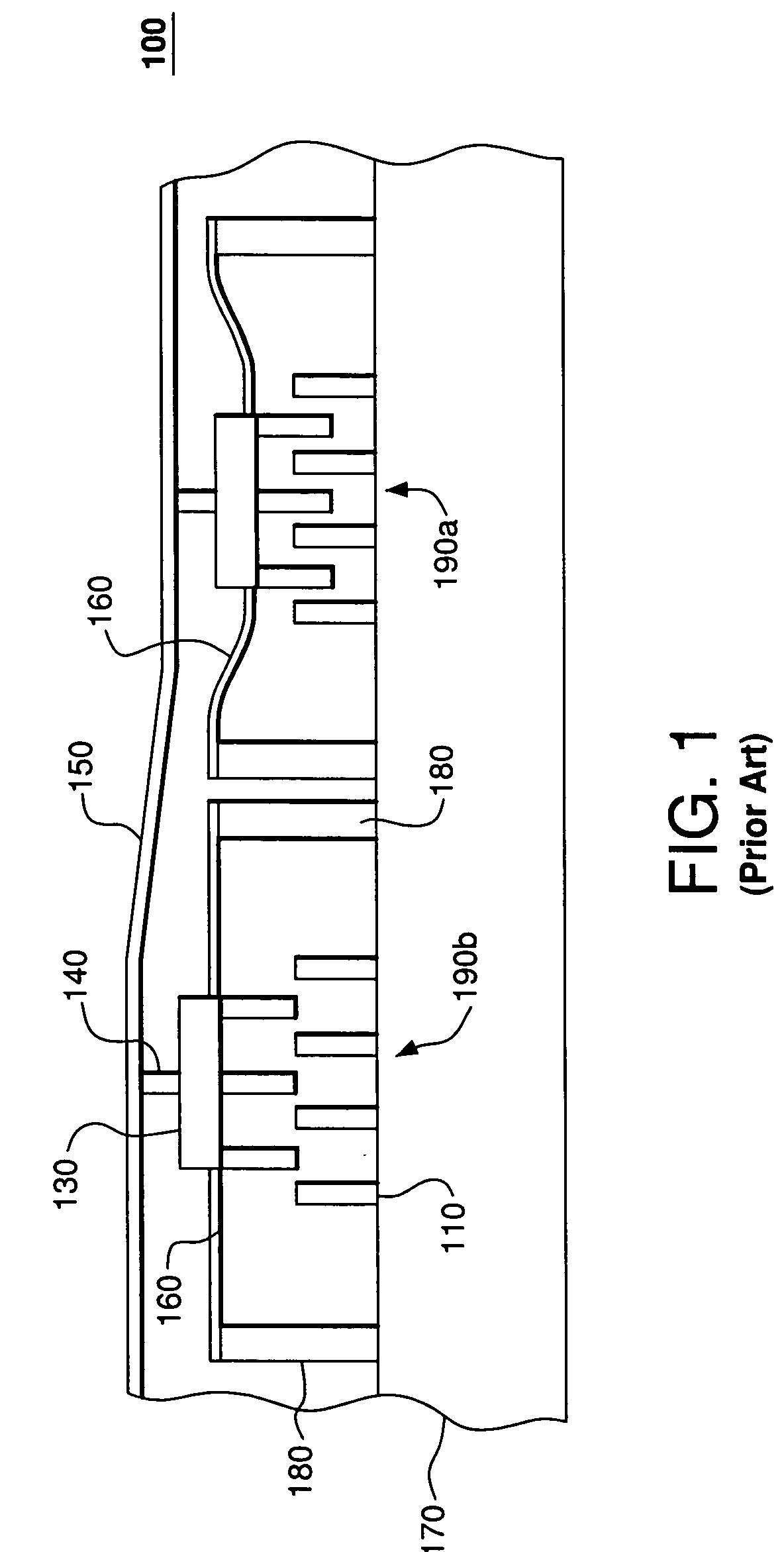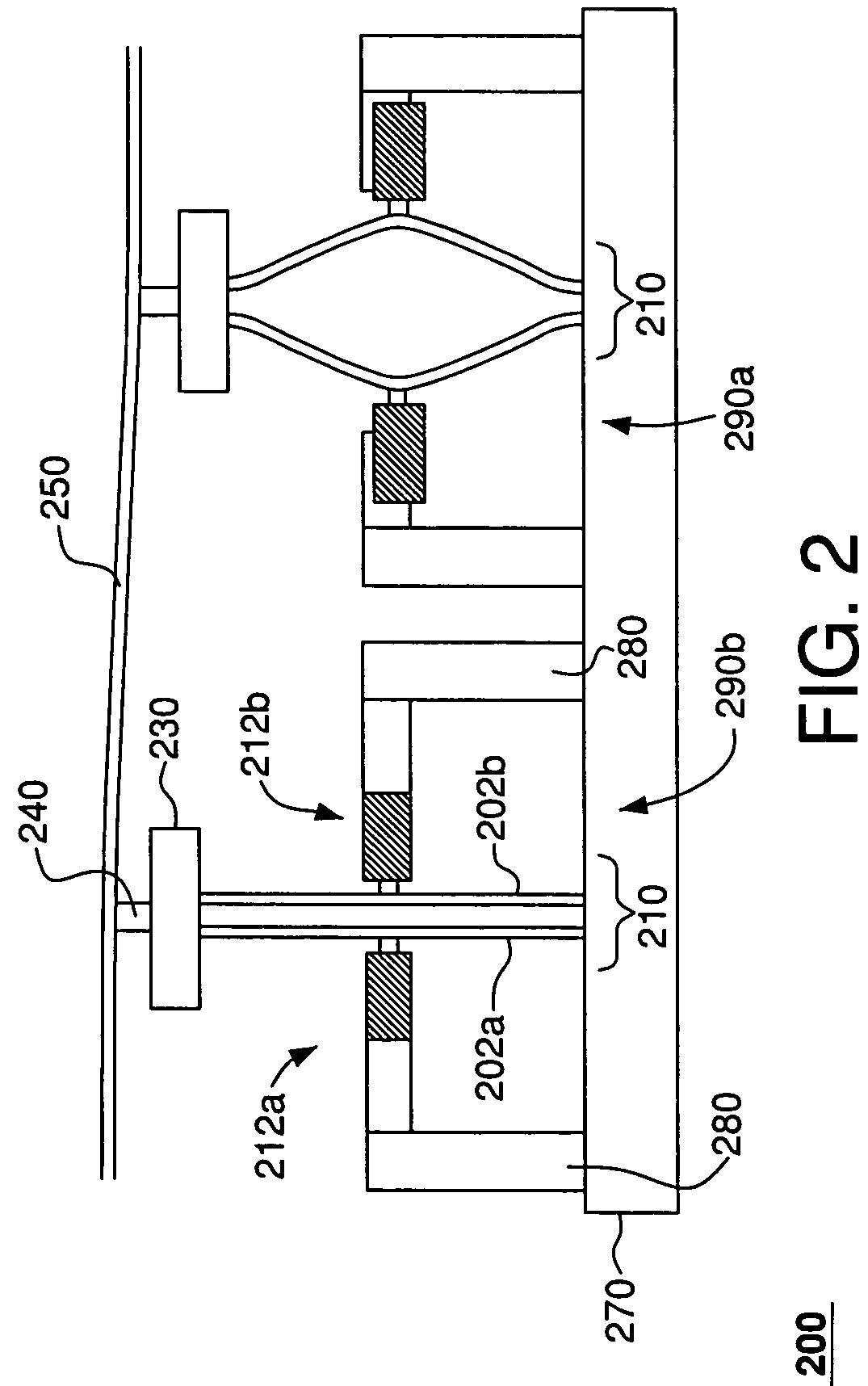MEMS actuator for piston and tilt motion
a technology of actuators and pistons, applied in the field of microelectromechanical systems, can solve the problems of affecting the alignment of the interleaved structure affecting the image quality, and affecting the alignment of the comb-shaped portion,
- Summary
- Abstract
- Description
- Claims
- Application Information
AI Technical Summary
Benefits of technology
Problems solved by technology
Method used
Image
Examples
Embodiment Construction
[0019] Reference herein to “one embodiment” or “an embodiment” means that a particular feature, structure, or characteristic described in connection with the embodiment can be included in at least one embodiment of the invention. The appearances of the phrase “in one embodiment” in various places in the specification are not necessarily all referring to the same embodiment, nor are separate or alternative embodiments mutually exclusive of other embodiments.
[0020]FIG. 1 shows a side view of a representative prior-art device 100 disclosed in U.S. Pat. No. 6,384,952. Device 100 has a deformable membrane 150 connected to a plurality of actuators 190 supported on a substrate 170. Only two actuators 190a-b of the plurality are shown in FIG. 1. Each actuator 190 has (i) a stator 110 attached to substrate 170 and (ii) a slider 120 supported on the substrate by two anchors 180 and a spring 160. To transfer motion of slider 120 to membrane 150, device 100 has a pole 140 attached between the ...
PUM
 Login to View More
Login to View More Abstract
Description
Claims
Application Information
 Login to View More
Login to View More - R&D
- Intellectual Property
- Life Sciences
- Materials
- Tech Scout
- Unparalleled Data Quality
- Higher Quality Content
- 60% Fewer Hallucinations
Browse by: Latest US Patents, China's latest patents, Technical Efficacy Thesaurus, Application Domain, Technology Topic, Popular Technical Reports.
© 2025 PatSnap. All rights reserved.Legal|Privacy policy|Modern Slavery Act Transparency Statement|Sitemap|About US| Contact US: help@patsnap.com



